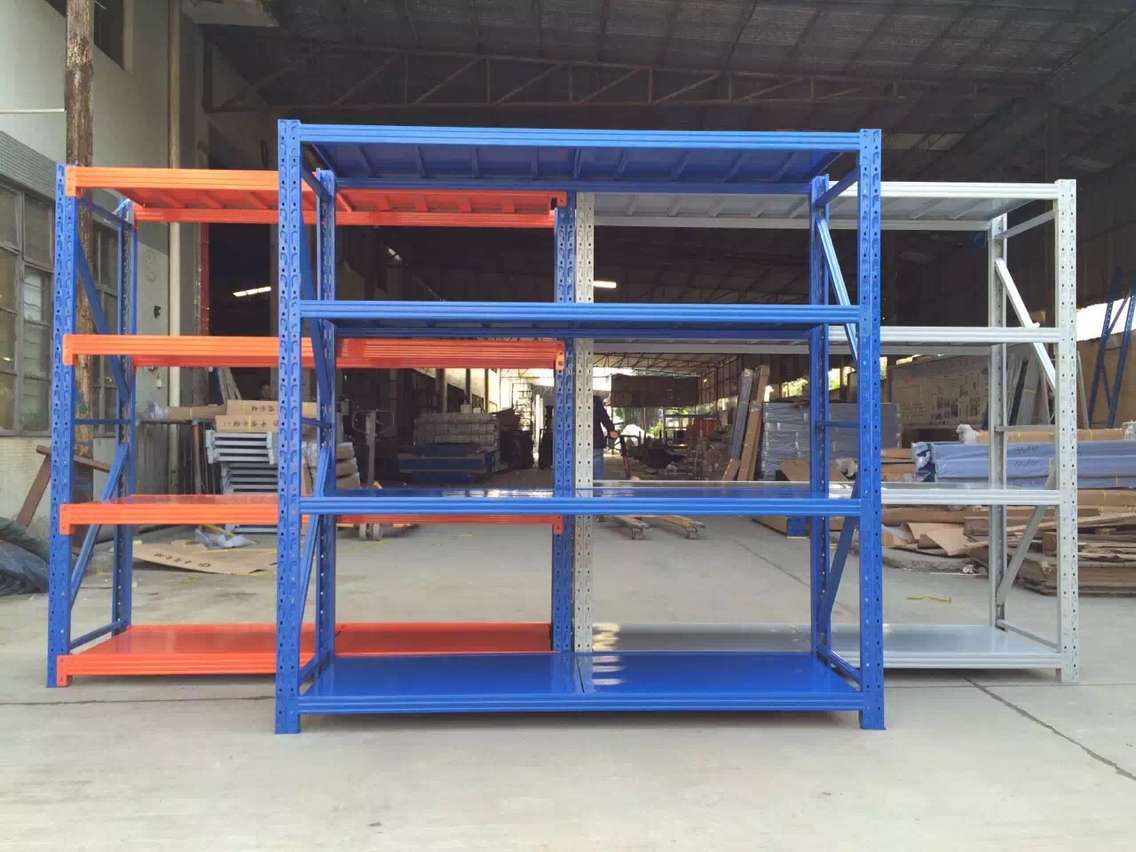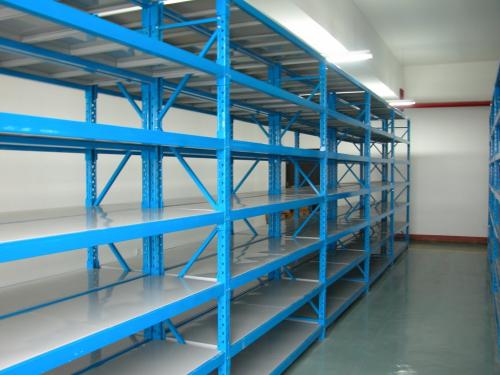In today's fast-paced industrial and logistics environments, warehouse safety and organization are paramount. One critical element that often goes overlooked is the integrity of storage systems, particularly pallet racking. Secure pallet racking is not just a buzzword; it's a fundamental aspect of ensuring that warehouses operate smoothly, minimize accidents, and comply with safety regulations. This article delves into the core aspects of secure pallet racking, offering practical insights and strategies to help businesses enhance their storage infrastructure. By focusing on key areas such as design, installation, and maintenance, we aim to provide a comprehensive understanding of how to achieve and maintain secure pallet racking systems that stand the test of time. Whether you're a warehouse manager, safety officer, or business owner, this information will empower you to make informed decisions that protect both your assets and your team.

Secure pallet racking refers to storage systems designed to safely hold palletized goods in warehouses, distribution centers, and other industrial settings. These systems are engineered to withstand heavy loads, environmental stresses, and daily operational demands while minimizing risks such as collapses, falls, or damage. The concept of secure pallet racking encompasses not only the physical structure but also the practices and protocols that ensure its stability and reliability. Typically made from steel, these racking systems include components like beams, upright frames, and connectors that must be properly assembled and maintained. The goal of secure pallet racking is to create a robust framework that supports efficient inventory management, reduces workplace hazards, and adheres to industry standards like those from OSHA (Occupational Safety and Health Administration) or RMI (Rack Manufacturers Institute). By investing in secure pallet racking, businesses can prevent costly accidents, improve workflow, and extend the lifespan of their storage equipment.
A well-designed secure pallet racking system consists of several essential components that work together to provide stability and safety. Understanding these parts is crucial for proper installation and maintenance. First, the upright frames form the vertical support structure, often equipped with safety locks and footplates to anchor the system to the floor. Beams, which are horizontal members, connect to the uprights and hold the pallets in place; they should be rated for specific load capacities to ensure secure pallet racking. Additionally, wire mesh decking or pallet supports can be added to prevent items from falling and to distribute weight evenly. Other elements include row spacers, which maintain alignment, and safety pins or bolts that secure connections. For enhanced secure pallet racking, consider accessories like column guards, aisle protection systems, and seismic bracing in earthquake-prone areas. Each component must be inspected regularly for signs of wear, such as dents or corrosion, to maintain the integrity of the secure pallet racking system and avoid potential failures.

Implementing secure pallet racking offers numerous advantages that go beyond basic storage. Firstly, it significantly enhances workplace safety by reducing the risk of rack collapses, which can lead to injuries, fatalities, and property damage. This proactive approach to secure pallet racking also improves operational efficiency by allowing for better space utilization and faster inventory access. For instance, organized racking systems enable easier picking and restocking, which boosts productivity. Moreover, secure pallet racking helps businesses comply with legal and insurance requirements, potentially lowering premiums and avoiding fines. Another key benefit is cost savings; by preventing accidents and damage to goods, companies reduce downtime and replacement expenses. Additionally, a well-maintained secure pallet racking system can increase the resale value of a facility and support sustainability efforts by minimizing waste. Overall, investing in secure pallet racking is a smart business decision that fosters a culture of safety and reliability.
Proper installation is the foundation of secure pallet racking, and following best practices can prevent many common issues. Start by conducting a site assessment to evaluate floor conditions, load requirements, and spatial layout. It's essential to use certified professionals for installation, as they understand the nuances of secure pallet racking systems and can ensure that all components are aligned and secured correctly. During installation, always adhere to the manufacturer's guidelines and local building codes. This includes using the right anchors and bolts to fasten the racking to the floor, which is critical for stability. For secure pallet racking, consider factors like seismic zones and high-traffic areas where additional bracing might be needed. After installation, perform a load test to verify that the system can handle the intended weights safely. Documenting the installation process and keeping records of load capacities and layouts will aid in future inspections and maintenance. By prioritizing these steps, you can establish a secure pallet racking system that performs reliably under various conditions.
Regular maintenance and inspections are vital to sustaining secure pallet racking over time. Without a consistent schedule, even the best-installed systems can degrade, leading to hazards. Develop a routine inspection plan that includes daily visual checks by staff for obvious issues like bent beams or loose connections, and more thorough quarterly or annual audits by qualified inspectors. During inspections, focus on key areas: look for damage to upright frames, ensure beams are properly seated and locked, and check for corrosion or wear. Use a checklist based on standards from organizations like RMI to cover all aspects of secure pallet racking. If any damage is found, address it immediately—for example, replace damaged components rather than attempting repairs that could compromise safety. Training employees to recognize and report issues is also part of maintaining secure pallet racking. Additionally, keep the area around the racking clear of debris and ensure that forklift operators are trained to avoid collisions. By embedding these protocols into your operations, you can prolong the life of your secure pallet racking and minimize risks.
Despite best efforts, secure pallet racking systems face several common risks that require proactive mitigation. One major risk is overloading, which can cause beams to buckle or uprights to collapse. To prevent this, always adhere to the rated load capacities and use clear labeling to inform staff. Another risk is impact damage from forklifts or other equipment, which can weaken the structure. Mitigate this by installing protective barriers, such as guard rails or bollards, and training operators on safe maneuvering. Environmental factors like humidity or temperature fluctuations can also affect secure pallet racking, leading to corrosion or material fatigue. Use corrosion-resistant coatings and conduct regular cleanings to combat this. Additionally, poor installation or modifications without professional input can compromise secure pallet racking. Always consult experts for any changes and avoid DIY adjustments. Finally, human error, such as improper pallet placement, can destabilize the system. Implement training programs and use signage to promote best practices. By identifying these risks and taking preventive measures, you can maintain a secure pallet racking environment that safeguards both people and products.
Technology plays an increasingly important role in achieving and maintaining secure pallet racking. Advanced tools like IoT (Internet of Things) sensors can monitor rack stability in real-time, alerting managers to potential issues before they become critical. For example, sensors can detect vibrations, load shifts, or impacts, providing data that supports proactive maintenance for secure pallet racking. Similarly, warehouse management systems (WMS) can integrate with racking layouts to optimize load distribution and prevent overloading. Drones and automated inspection robots are also being used to assess hard-to-reach areas, ensuring comprehensive checks without putting workers at risk. Moreover, software solutions can track inspection histories and generate reports for compliance, making it easier to manage secure pallet racking systems over their lifecycle. By leveraging these technologies, businesses can enhance the security and efficiency of their pallet racking, reducing human error and improving overall safety outcomes. Embracing innovation is key to staying ahead in the quest for truly secure pallet racking.
In summary, secure pallet racking is an indispensable component of modern warehouse management that demands attention to detail, from design and installation to maintenance and risk mitigation. By understanding its key aspects—such as components, benefits, best practices, and technological integrations—businesses can create a safer, more efficient storage environment. Prioritizing secure pallet racking not only protects assets and personnel but also drives operational excellence and regulatory compliance. As industries evolve, continuous education and adaptation will be crucial for sustaining these systems. We encourage you to assess your current setup and implement the strategies discussed to achieve optimal secure pallet racking. Remember, a proactive approach today can prevent disasters tomorrow.
Q1: What are the primary factors that affect the security of pallet racking systems?
A1: The security of pallet racking systems is influenced by several factors, including proper installation, adherence to load capacities, regular maintenance, environmental conditions, and employee training. For instance, overloading or impact from equipment can compromise stability, so it's essential to follow manufacturer guidelines and conduct routine inspections to ensure secure pallet racking.
Q2: How often should I inspect my pallet racking to ensure it remains secure?
A2: It's recommended to perform visual inspections daily by staff for obvious issues and more detailed inspections by qualified professionals at least annually or after any incident. For high-usage facilities, quarterly checks may be necessary. Regular inspections are a cornerstone of maintaining secure pallet racking and preventing accidents.
Q3: Can I repair damaged pallet racking components myself, or should I hire a professional?
A3: While minor issues like tightening bolts might be handled in-house, significant damage such as bent beams or cracked uprights should always be addressed by professionals. DIY repairs can weaken the structure and void warranties, jeopardizing secure pallet racking. Consult the manufacturer or a certified technician for safe repairs.
Q4: What are the consequences of not having secure pallet racking in a warehouse?
A4: Without secure pallet racking, warehouses face increased risks of collapses, leading to injuries, fatalities, product damage, and legal liabilities. This can result in costly downtime, higher insurance premiums, and reputational damage. Investing in secure pallet racking helps avoid these negative outcomes.
Q5: Are there specific regulations or standards for secure pallet racking that I need to follow?
A5: Yes, organizations like OSHA in the United States and RMI provide standards and guidelines for secure pallet racking. These cover aspects such as load ratings, installation practices, and inspection protocols. Compliance with these standards is crucial for legal safety requirements and ensuring a reliable storage system.
 Wechat
Wechat
 Whatsapp
Whatsapp